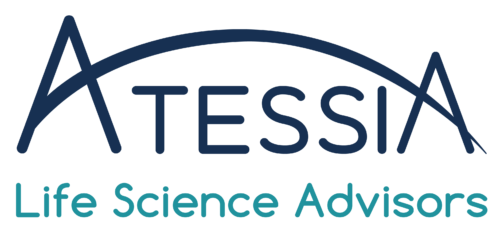In Europe, changes to a marketing authorisation (MA) for a human medicine are covered by Regulation (EC) No. 1234/2008 of November 24, 2008. This regulation has been applicable since January 1, 2010 to MAs obtained in centralized, decentralized and mutual recognition procedures, and since August 4, 2013 to MAs obtained in national procedures. It presents multiple possibilities for classifying the modifications that can be made to a MA, including the Post-Approval Change Management Protocol (known by the acronym “PACMP”) which we will focus on in this article.
- Origin and definition
A PACMP is a regulatory tool providing predictability and transparency in terms of requirements and studies necessary for the implementation of a strictly CMC (for “Chemistry, Manufacturing & Controls”) change, because the approved protocol of the planned changes constitutes an agreement between the MA holder and the regulatory authority. This is a step-wise approach to evaluating modifications, initially allowing for an early evaluation of the modification strategy and, in a 2nd step, a subsequent separate evaluation of the data produced after implementation of the planned changes on the basis of the agreed strategy.
The objective of this tool is to allow faster and more predictable implementation of modifications after approval, given that the MA holder will have previously obtained the agreement of the authorities on the proposed strategy and the tests allowing to check the effect of the modification on the quality of the product. Typically, the variation category designated for reporting changes under a PACMP is at least one category lower than it would normally be (e.g., Type IB instead of Type II). The implementation of the changes planned in an approved PACMP is therefore faster and less risky for the laboratories that request it, which ultimately benefits to the marketing of the drug and therefore to the patient.
In 2012, the EMA compiled a set of questions and answers regarding the PACMP in the document “Questions and answers on post approval change management protocols (EMA/CHMP/CVMP/QWP/586330/2010)”. The following topics are covered:
- Suggestions for PACMP content;
- PACMP submission and evaluation mechanisms;
- Implementation of the change(s) after finalisation of the studies described in the PACMP;
- Types of changes that may be subject to a PACMP;
- Multiple changes within the framework of a single PACMP;
- Place of the PACMP in the Module 3 of the MA;
- PACMP and development according to the traditional approach versus the improved approach (so called “QbD” for “Quality by Design”).
In 2019, the ICH Q12 guideline “Technical and regulatory considerations for pharmaceutical product lifecycle management“, proposed in order to provide a framework to facilitate the management of changes to chemical properties, manufacturing and control measures after the authorisation, in a more predictable and efficient manner throughout the lifecycle of the product, has reinforced the place of the PACMP as an essential regulatory tool in the management of the lifecycle of medicines in Europe.
- Scope of the PACMP
The PACMP concerns both CMC modifications relative to the drug substance (DS) and modifications relative to the drug product (DP). It applies to all medicinal products for human and veterinary use, including biotechnological or biological products, whether a traditional or improved (“QbD”) approach was followed for the development of the product. However, its use is optional.
A PACMP can be applied to a single product, multiple products, or multiple products and multiple sites.
The presence of a PACMP in its MA file involves careful risk analysis and a full understanding of the different risk assessments to ensure that the quality, safety and efficacy of the medicine are never compromised.
It has to be noted that no modification described in a PACMP should result in additional risks to patient safety, product quality or efficacy. Also, a CMC modification that would require human efficacy, safety, or pharmacokinetic/pharmacodynamic data to evaluate the effect of the modification (e.g., certain formulation changes, clinical or nonclinical studies to evaluate new impurities, evaluation of immunogenicity or antigenicity) cannot be included in a PACMP.
- Formalisation of the PACMP in the MA file
The PACMP takes the form of one or more document(s) presented in section 3.2.R “Regional Information” of the MA file. It can be planned as soon as the MA application is made or during a MA variation application (Type II).
- MA modifications linked to the PACMP
The different variations linked to the introduction, deletion or modification of a PACMP in a MA file are presented in the table below.
| Active substance | Finished product |
| Variation Type II/B.I.e.2: Introduction of a post approval change management protocol related to the active substance > Absence of conditions to be fulfilled. > Three supportive documentation to be provided: 1. Detailed description for the proposed change. 2. Change management protocol related to the active substance. 3. Amendment of the relevant section(s) of the dossier | Variation Type II/B.II.g.2: Introduction of a post approval change management protocol related to the finished product > Absence of conditions to be fulfilled. > Three supportive documentation to be provided: 1. Detailed description for the proposed change. 2. Change management protocol related to the finished product. 3. Amendment of the relevant section(s) of the dossier. |
| Variation Type IAIN/B.I.e.3: Deletion of an approved change management protocol related to the active substance > One condition to be fulfilled: 1. The deletion of the approved change management protocol related to the active substance is not a result of unexpected events or out of specification results during the implementation of the change(s) described in the protocol and does not have any effect on the already approved information in the dossier. > Two supportive documentation to be provided: 1. Justification for the proposed deletion. 2. Amendment of the relevant section(s) of the dossier. | Variation Type IAIN/B.II.g.3: Deletion of an approved change management protocol related to the finished product > One condition to be fulfilled: 1. The deletion of the approved change management protocol related to the finished product is not a result of unexpected events or out of specification results during the implementation of the change(s) described in the protocol and does not have any effect on the already approved information in the dossier. > Two supportive documentation to be provided: 1. Justification for the proposed deletion. 2. Amendment of the relevant section(s) of the dossier. |
| Variation Type II/B.I.e.4a): Changes to an approved change management protocol – Major changes to an approved change management protocol | Variation Type II/B.II.g.4a): Changes to an approved change management protocol – Major changes to an approved change management protocol |
| Variation Type IB/B.I.e.4b): Changes to an approved change management protocol – Minor changes to an approved change management protocol that do not change the strategy defined in the protocol > Absence of conditions to be fulfilled. > One supportive documentation to be provided: 1. Declaration that any change should be within the range of currently approved limits. In addition, declaration that an assessment of comparability is not required for biological/immunological medicinal products. | Variation Type IB/B.II.g.4b): Changes to an approved change management protocol – Minor changes to an approved change management protocol that do not change the strategy defined in the protocol > Absence of conditions to be fulfilled. > One supportive documentation to be provided: 1. Declaration that any change should be within the range of currently approved limits. In addition, declaration that an assessment of comparability is not required for biological/immunological medicinal products. |
| Variation Type IAIN/B.I.e.5a): Implementation of changes foreseen in an approved change management protocol – The implementation of the change requires no further supportive data > One condition to be fulfilled: 1. The proposed change has been performed fully in line with the approved change management protocol. > Three supportive documentation to be provided: 1. Reference to the approved change management protocol. 2. Declaration that the change is in accordance with the approved change management and that the study results meet the acceptance criteria specified in the protocol. In addition, declaration that an assessment of comparability is not required for biological/immunological medicinal products. 4. Amendment of the relevant section(s) of the dossier. | Variation Type IAIN/B.II.g.5a): Implementation of changes foreseen in an approved change management protocol – The implementation of the change requires no further supportive data > One condition to be fulfilled: 1. The proposed change has been performed fully in line with the approved change management protocol, which requires its immediate notification following implementation. > Three supportive documentation to be provided: 1. Reference to the approved change management protocol. 2. Declaration that the change is in accordance with the approved change management and that the study results meet the acceptance criteria specified in the protocol. In addition, declaration that an assessment of comparability is not required for biological/immunological medicinal products. 4. Amendment of the relevant section(s) of the dossier. |
| Variation Type IB/B.I.e.5b): Implementation of changes foreseen in an approved change management protocol – The implementation of the change requires further supportive data > Absence of conditions to be fulfilled. > Four supportive documentation to be provided: 1. Reference to the approved change management protocol. 2. Declaration that the change is in accordance with the approved change management and that the study results meet the acceptance criteria specified in the protocol. In addition, declaration that an assessment of comparability is not required for biological/immunological medicinal products. 3. Results of the studies performed in accordance with the approved change management protocol 4. Amendment of the relevant section(s) of the dossier | Variation Type IB/B.II.g.5b): Implementation of changes foreseen in an approved change management protocol – The implementation of the change requires further supportive data > Absence of conditions to be fulfilled. > Four supportive documentation to be provided: 1. Reference to the approved change management protocol. 2. Declaration that the change is in accordance with the approved change management and that the study results meet the acceptance criteria specified in the protocol. In addition, declaration that an assessment of comparability is not required for biological/immunological medicinal products. 3. Results of the studies performed in accordance with the approved change management protocol 4. Amendment of the relevant section(s) of the dossier. |
| Variation Type IB/B.I.e.5c): Implementation of changes foreseen in an approved change management protocol – Implementation of a change for a biological/immunological medicinal product > Absence of conditions to be fulfilled. > Five supportive documentation to be provided: 1. Reference to the approved change management protocol. 2. Declaration that the change is in accordance with the approved change management and that the study results meet the acceptance criteria specified in the protocol. In addition, declaration that an assessment of comparability is not required for biological/immunological medicinal products. 3. Results of the studies performed in accordance with the approved change management protocol 4. Amendment of the relevant section(s) of the dossier. 5. Copy of approved specifications of the active substance | Variation Type IB/B.II.g.5c): Implementation of changes foreseen in an approved change management protocol – Implementation of a change for a biological/immunological medicinal product > Absence of conditions to be fulfilled. > Five supportive documentation to be provided: 1. Reference to the approved change management protocol. 2. Declaration that the change is in accordance with the approved change management and that the study results meet the acceptance criteria specified in the protocol. In addition, declaration that an assessment of comparability is not required for biological/immunological medicinal products. 3. Results of the studies performed in accordance with the approved change management protocol 4. Amendment of the relevant section(s) of the dossier. 5. Copy of approved specifications of the finished product. |
Article written by Isabelle MOUVAULT, Pharmaceutical Affairs Senior Consultant

